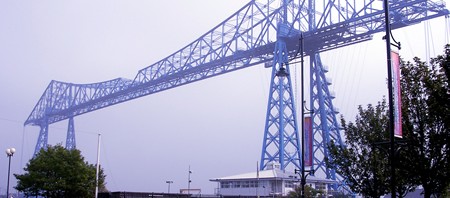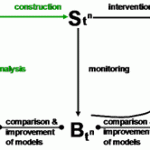Car use in the UK has risen an astonishing 70% in the last two decades and will apparently continue to rise, causing no end of headaches for structural engineers. When they design bridges, engineers need to anticipate factors such as current and future traffic on the bridge at any given time.
Clever constraints
Teesside engineers were one step ahead when they designed the Transporter Bridge in 1872 to cross the River Tees in Middlesbrough. It opened in 1911. By constructing something that is a cross between a large crane and a ferry, it was at the time, and is still now, possible to calculate the maximum load on the bridge.
The Transporter has a platform, which has a limit to the number of cars and people that physically fit on it at any one time, and moves from one river bank to the other in about two and half minutes. By knowing how many times a day the trip is made and the maximum amount of cars and people, it was possible to calculate the daily load on the bridge and to design for it.
Whilst controlling the amount of traffic on the bridge, the Transporter also doesn’t interfere with the traffic on the river. It has a platform which is suspended above ships and doesn’t stop transporting traffic unlike draw bridges and swing bridges. Apparently, it takes a steady hand to navigate through the opening of a swing bridge – according to a 1928 edition of Meccano Magazine. Many ships would run into the piers and cause damage. The Transporter neatly avoided this problem.
Pedestrians used to be able to walk across the top of the Transporter and peer down through the wire meshing under their feet to the Tees 160 feet below. This was closed some years ago and all pedestrians now have to pay and sit in the pedestrian booth on the platform.
Iconic design
The Transporter Bridge is iconic. It can be recognised from miles around and is used by the local authorities in their logo. In an age where architects are consciously creating iconic structures in order to promote themselves or tourism in regenerating towns, it is refreshing to see an iconic structure that doesn’t have hopes pinned to it (like Middlesbrough’s new Mima) but embodies the history of the town instead.
The Transporter Bridge belongs with the world’s greatest bridges – Newport Bridge, the Tyne Bridge and Sydney Harbour Bridge in Australia -not least because they were all made at Dorman Long, Middlesbrough.






